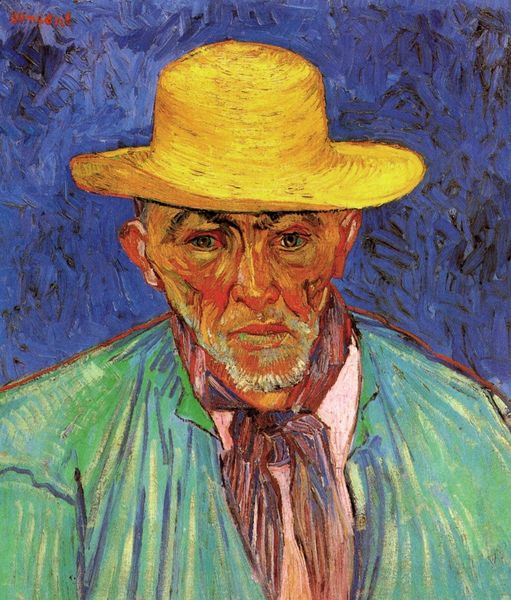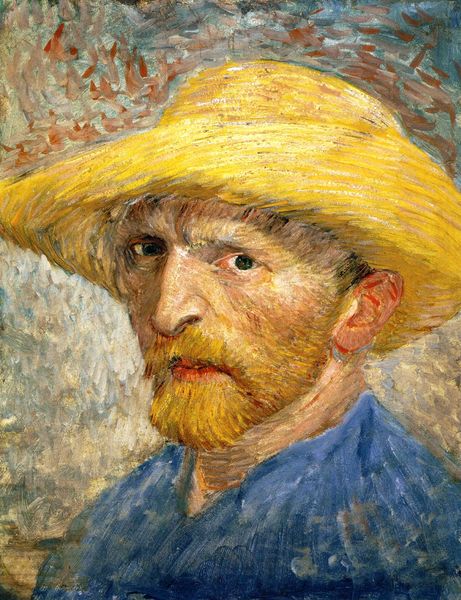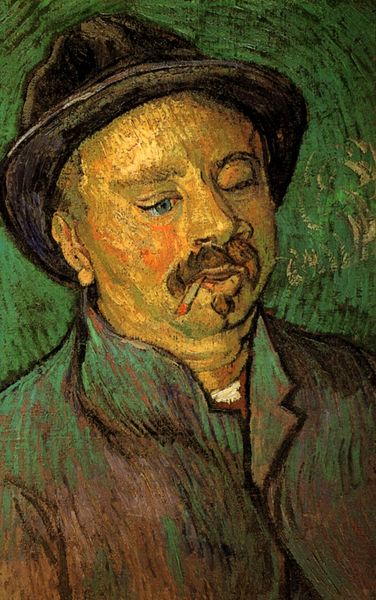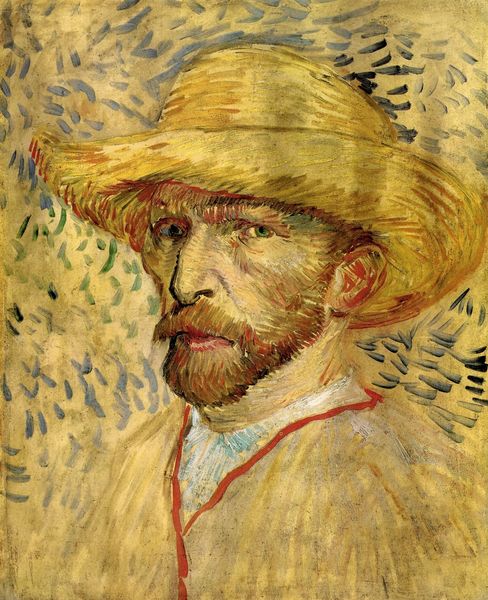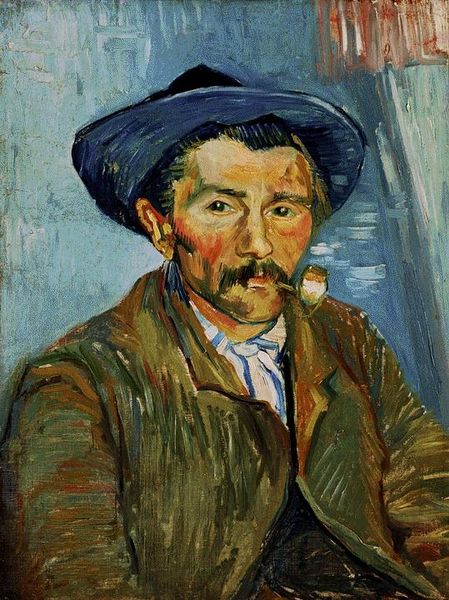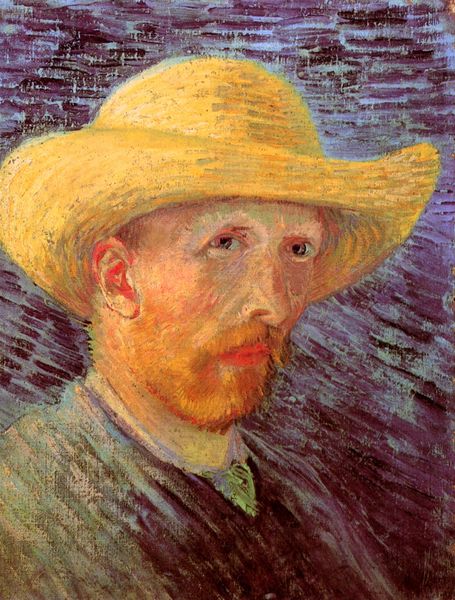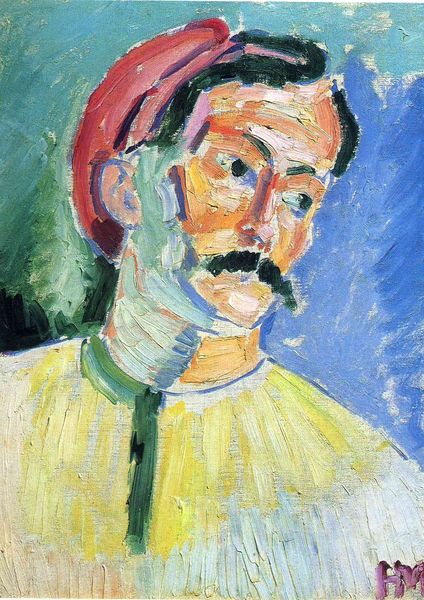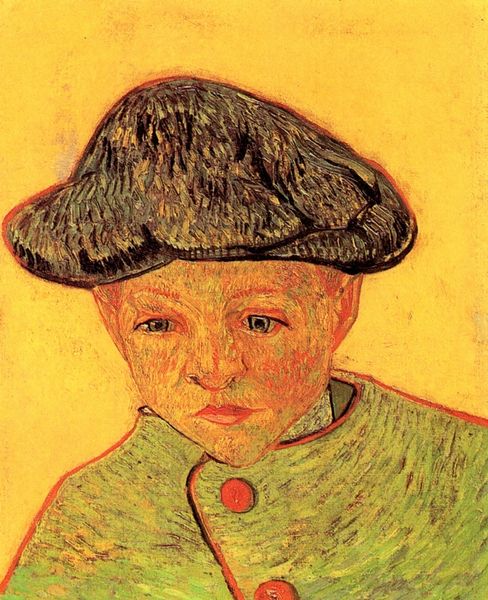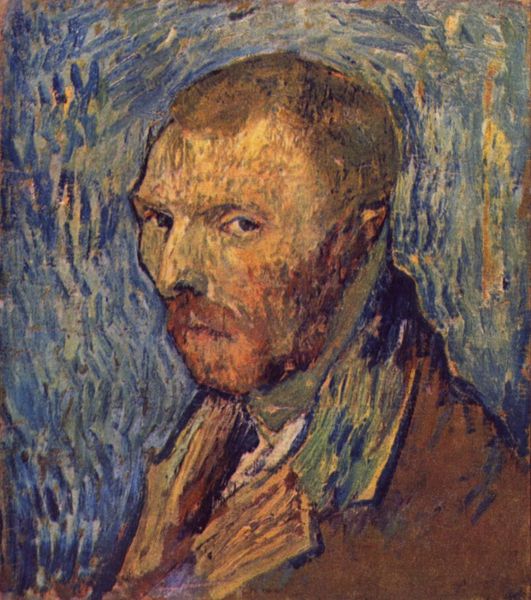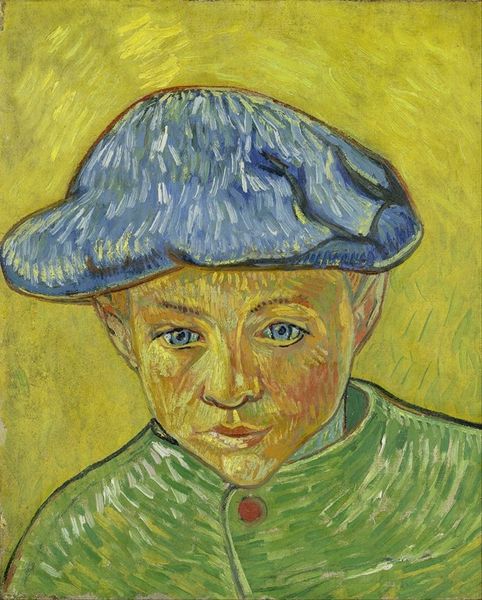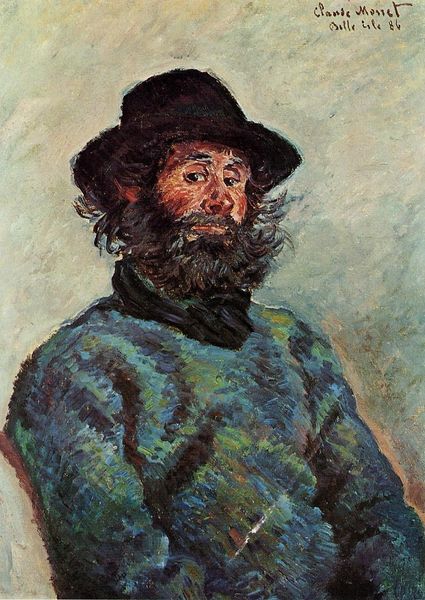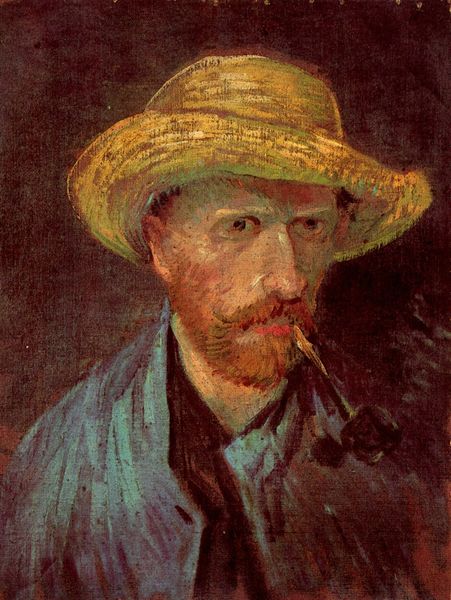
Dimensions: 42 x 30 cm
Copyright: Public domain
Editor: Today, we're looking at Vincent van Gogh's "Self Portrait" from 1888, created with oil paint. The colors really pop! It's striking how the bright yellow of the hat contrasts with the almost melancholic expression on his face. What's your interpretation of this work? Curator: Well, consider the context. Van Gogh painted many self-portraits, especially during periods of isolation, like his time in Arles. How might these self-representations, circulated and now exhibited, construct a particular image of the artist? Editor: That’s a great question. Is he creating a public persona? The pipe seems deliberate... almost performative. Curator: Exactly! The pipe can be seen as a symbol of working-class masculinity, perhaps a conscious decision to align himself with a certain social group. But also think about how mental health and artistic genius were being discussed at that time. Is there a tension between portraying himself as ordinary versus exceptionally gifted or troubled? Editor: It’s interesting to consider that tension, especially given what we know about his life. I hadn’t considered the pipe as part of a deliberate public image, more just…him. Curator: These self-portraits were part of a broader negotiation of the artist's identity within the art market and society, where perceptions often trump reality. Were there institutional pressures shaping how he wanted to be seen? Editor: I never really thought about the role the ‘market’ would have to play, but you’re right. What he was creating wasn’t just personal expression; it was also potentially a commodity. Thanks, I'll definitely look at art, especially portraits, in a whole new way. Curator: Likewise. Thinking about the social and political factors always adds depth to my understanding of any artwork.
Comments
No comments
Be the first to comment and join the conversation on the ultimate creative platform.
